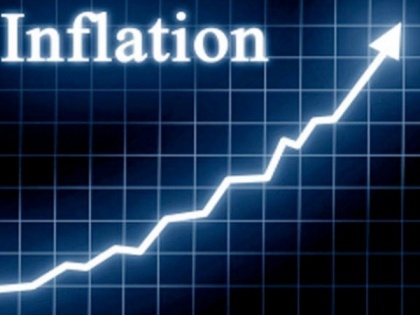Constrained milk, wheat supplies amid volatile crude market raise inflation concern in India
By ANI | Published: April 25, 2023 04:10 PM2023-04-25T16:10:15+5:302023-04-25T16:15:13+5:30
New Delhi [India], April 25 : Constrained supplies of milk and wheat, coupled with a volatile international crude oil ...

Constrained milk, wheat supplies amid volatile crude market raise inflation concern in India
New Delhi [India], April 25 : Constrained supplies of milk and wheat, coupled with a volatile international crude oil market with OPEC+ countries deciding to cut crude oil production from May 2023 are factors that may, going forward, influence the inflation outlook in India, Ministry of Finance's Monthly Economic Review report put out on Tuesday noted.
Milk inflation in India has remained elevated for several months due to a growing supply-demand mismatch. Milk production has been impacted by a Lumpy Skin Disease (LSD) infecting millions of cattle in late 2022, its prices also rose because of high fodder and transportation costs.
To meet the growing demand and considering the fact that the supply of milk in the ensuing summer season being a lean season may be less, the Ministry of Fisheries, mal Husbandry and Dairying earlier this month said there were demands from several dairy cooperatives for the import of conserved dairy commodities - milk fat and powder.
The ministry also added since the process of import takes time, the necessary back-end processes for need-based imports are being put in place to timely manage the situation in case of any eventuality.
For wheat, there were reports from various key growing states that unseasonal rains have flattened standing crops in some regions. Wheat, a rabi crop was in an advanced maturing stage and was expected to hit mandis in a fortnight or so.
"Although the second advance estimate has projected a record foodgrain production, the crop damage caused by unseasonal rains and hailstorms in some parts of the country since mid-March may constrain wheat production, besides perishable items such as fruits and vegetables," the Ministry of Finance's monthly report said.
A survey conducted by Agri Watch, an Indian market information and analysis firm specialising in agricultural commodities, has estimated India's wheat production of 102.89 million tonnes in the 2022-23 crop season, reduced from 104.24 million tons (estimated in March 2023) due to unseasonal rains and hail storm faced by key wheat producing states towards the end of March. The estimates were based on the survey conducted in two phases across nine states- Bihar, Gujarat, Haryana, Madhya Pradesh, Maharashtra, Rajasthan, Punjab, Uttar Pradesh, and West Bengal.
Notably, last year, too, the wheat crop was affected, not due to rains but heatwaves.
That came on top of the conflict in Ukraine. Global wheat prices have shown substantial volatility in the past year as both the countries Ukraine and Russia are two major suppliers of wheat.
Multiple rounds of heat waves in several wheat-growing regions in India before the rabi harvest last year affected crops. Wheat pods in the mature stage typically shrink if overexposed to heat.
To manage the overall food security of the country as well as meet the needs of the neighbouring and other vulnerable countries amid the double whammy, India then amended the export policy of wheat by putting its export under the "prohibited" category, which is still in force.
RBI has been engaged in necessary policy actions to counter inflationary pressures and support growth.
The Reserve Bank of India, in its first monetary policy review meeting in 2023-24, decided to keep the key benchmark interest rate the repo rate unchanged at 6.5 per cent, to assess the effects of the policy rate tightening done so far on various macroeconomic parameters.
Barring the recent pause, RBI has so far raised the repo rate, the rate at which it lends to banks, by 250 basis points cumulatively since May 2022 in the fight against inflation. In the US, the interest rate is currently at 4.75 to 5.00 per cent, which was near zero during the initial days of the pandemic.
Raising interest rates is a monetary policy instrument that typically helps suppress demand in the economy, thereby helping the inflation rate decline and vice versa.
The RBI sees retail inflation declining to 5.2 per cent in the full year of 2023-24, lower than the 5.5 per cent attained in 2021-22 which was mostly free of the impact of the Russia-Ukraine conflict.
In India, headline consumer price index-based (CPI) inflation (or retail inflation) has gradually declined from its peak of 7.8 per cent in April 2022 to 5.7 per cent in March 2023.
Disclaimer: This post has been auto-published from an agency feed without any modifications to the text and has not been reviewed by an editor
Open in app